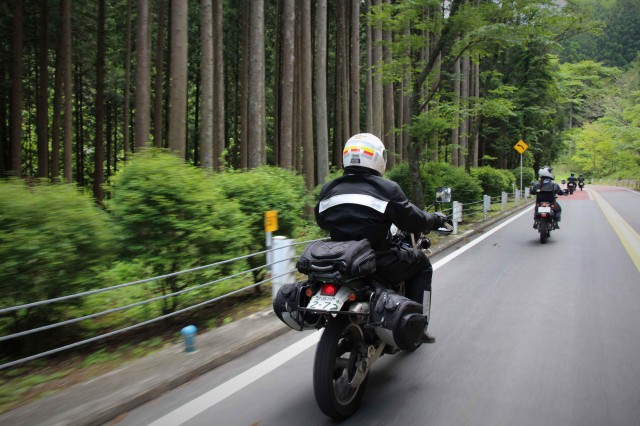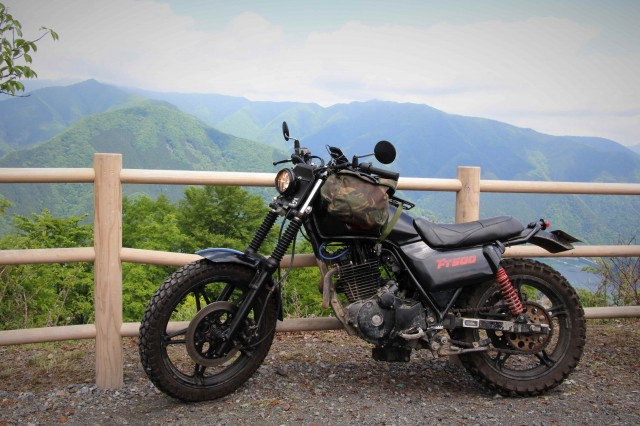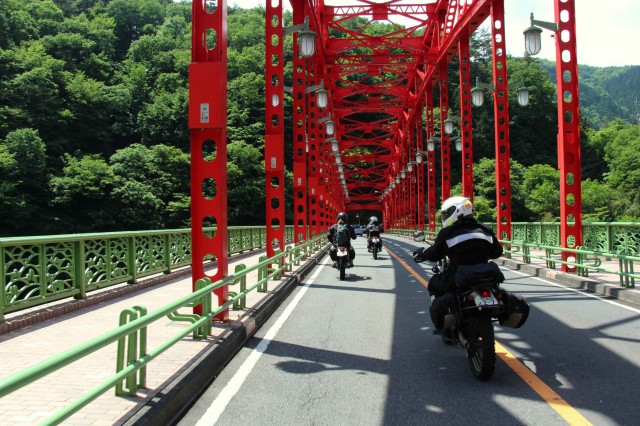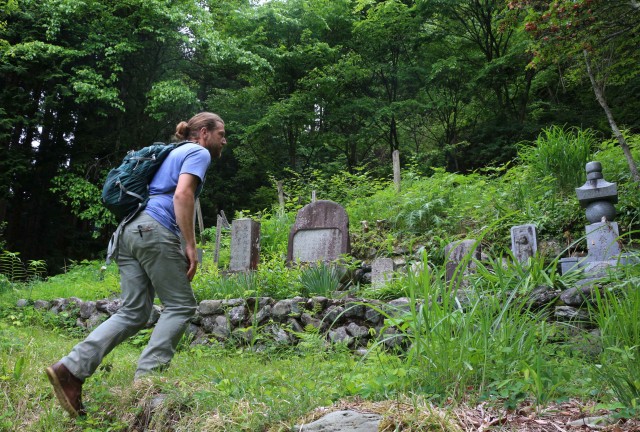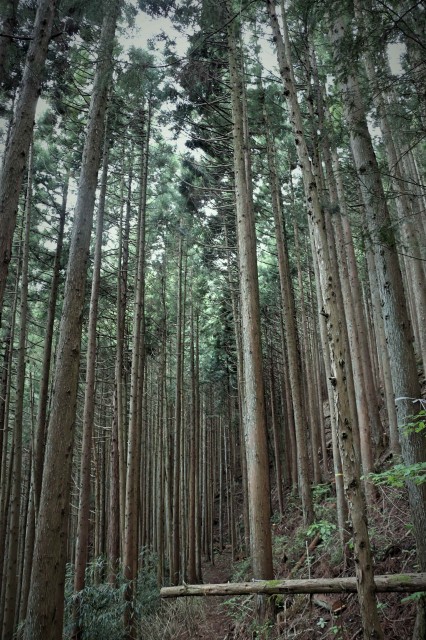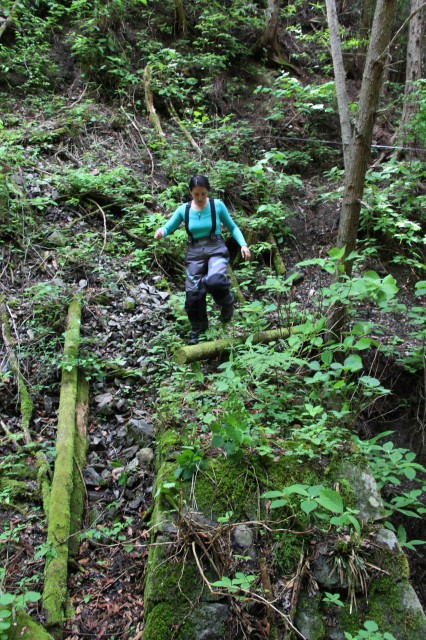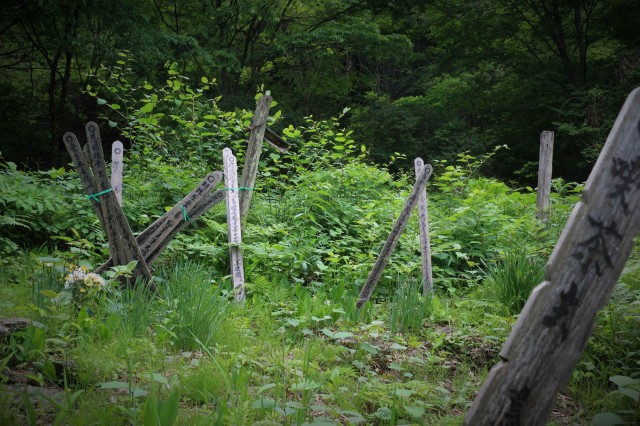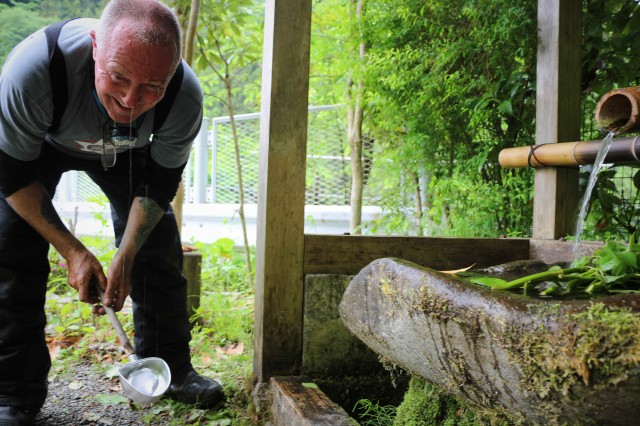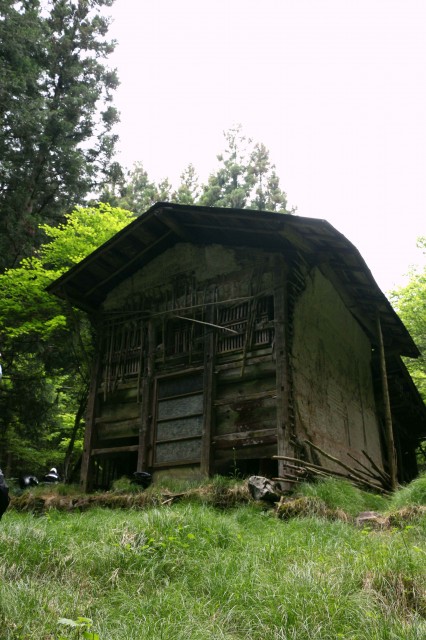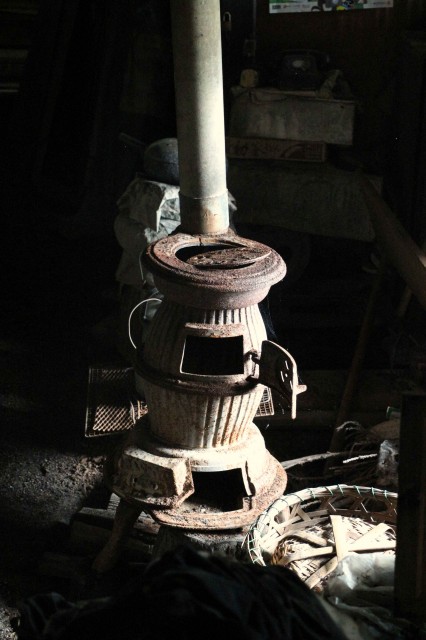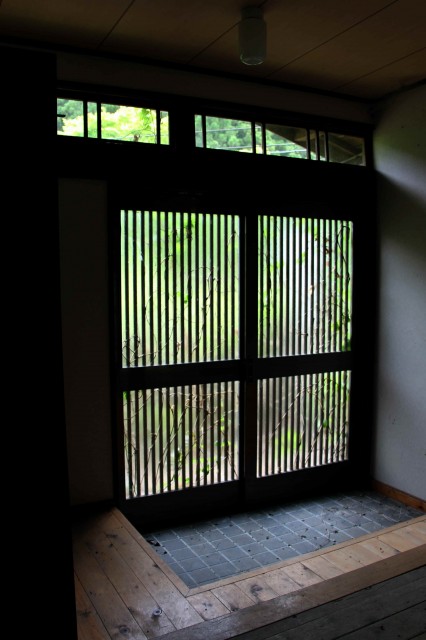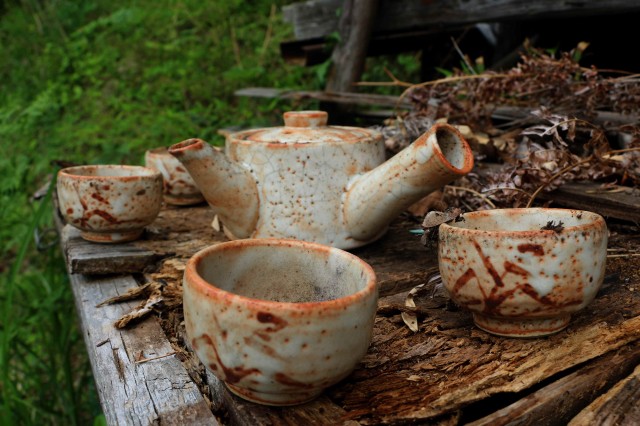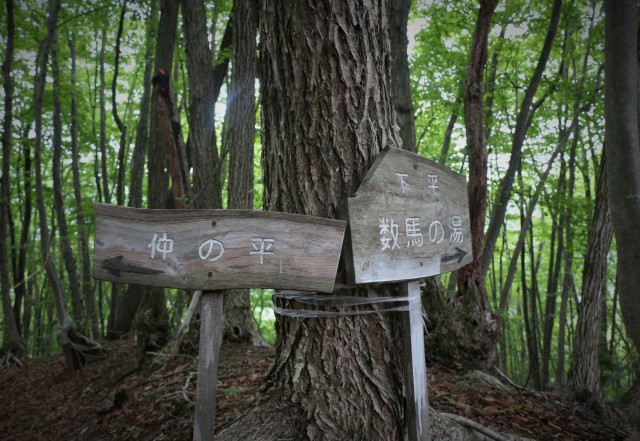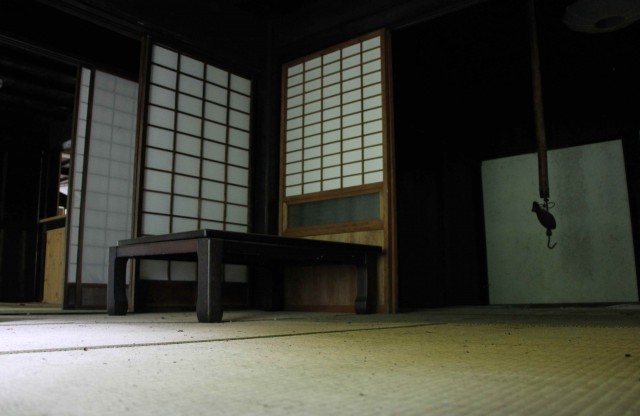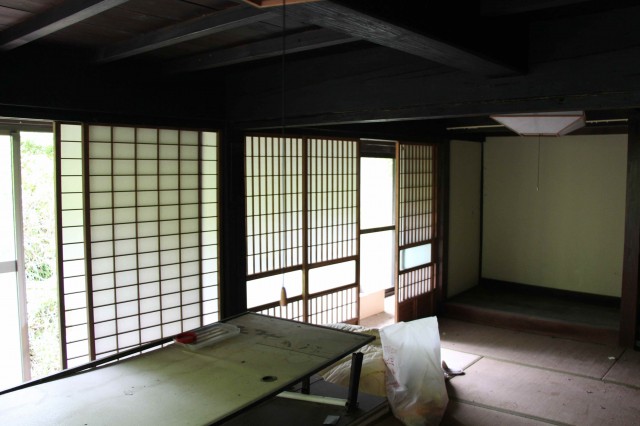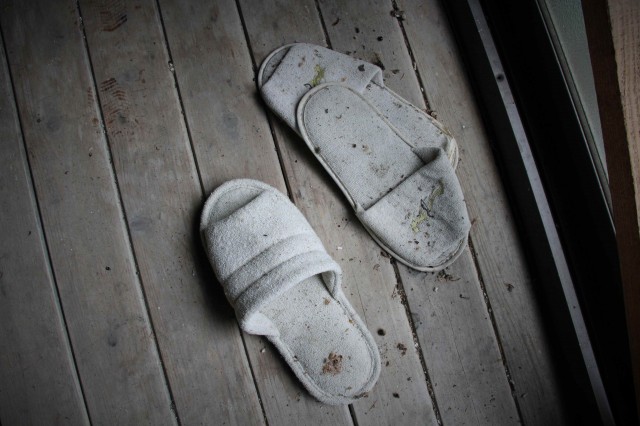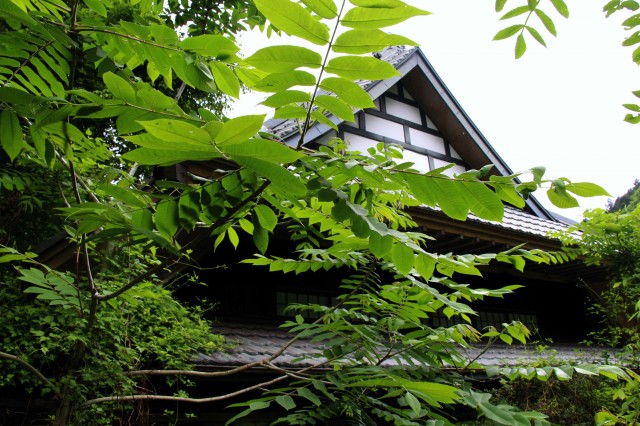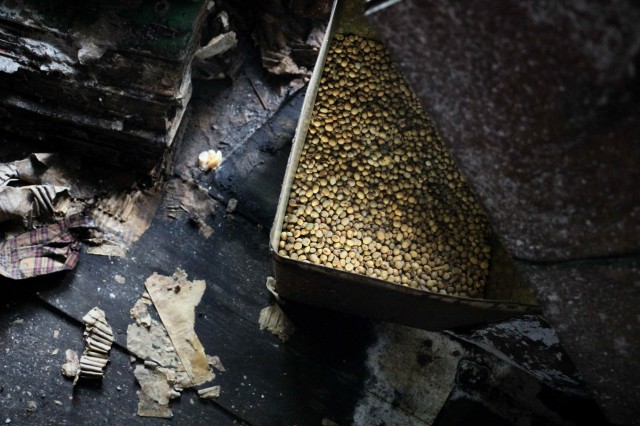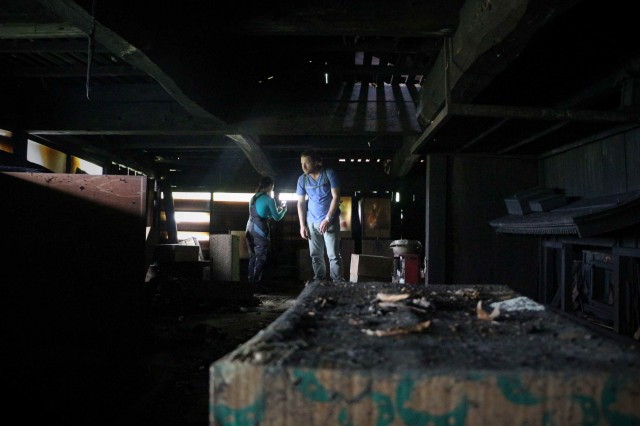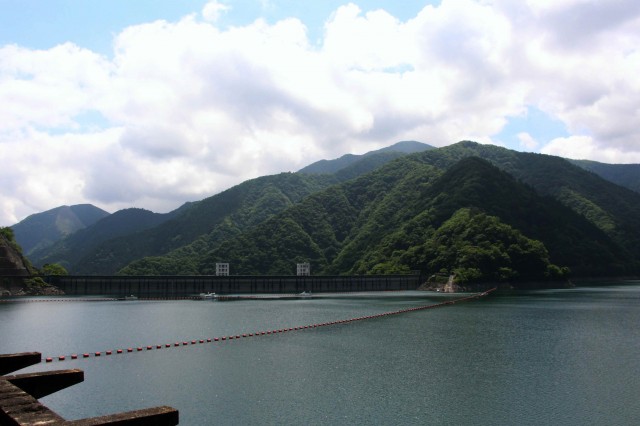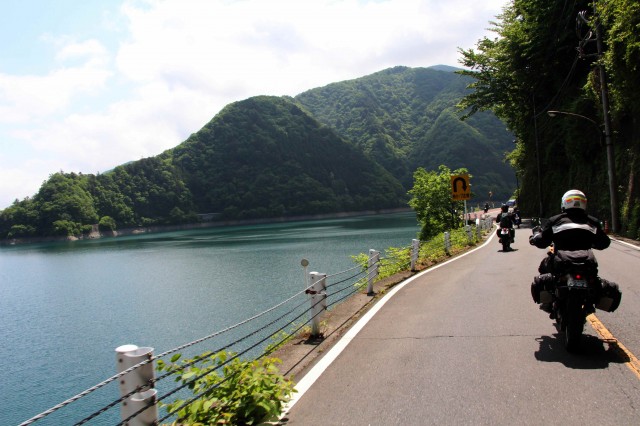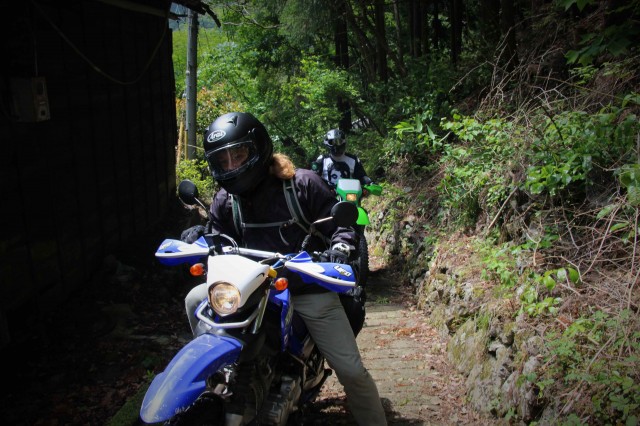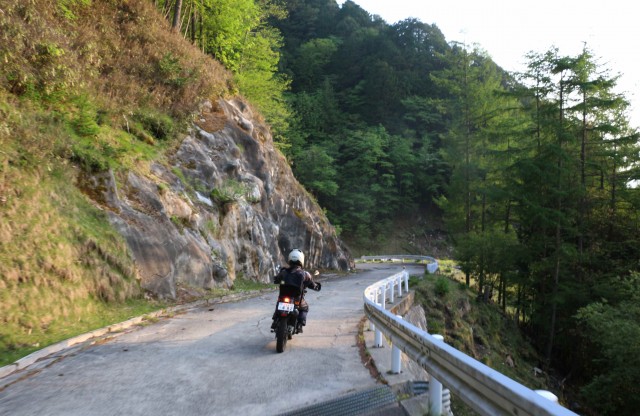Chris sent me a photo a few months ago. The gaping entrance to an out of service mine shaft was centered in the frame with two or three motorcycles sitting on one side, and what appeared to be an eager group of adventurer riders standing on the other. One of which was holding up the canvas sheet that was draped over the entrance. An ominous message was written on it, but since none of these gentlemen could read Japanese Kanji characters, no one cared what it said… or so I assumed. What I later learned was that Chris had aligned himself with a group of expatriates, who, with gray market dual-sport and adventure motorcycles seated beneath them, spend their free time exploring the hidden highways and abandoned Haikyos of Japan’s overlooked and often forgotten backcountry.
Our first encounter with these expatriates occurred in the parking lot of a convenience store. Now, not that this has anything to do with the story, but I need to mention how amazing Japan’s “convenience stores” can be. Imagine everything that’s alright with your local 7-11 – hot coffee, a quick bite to eat, a place to pee, et al. – then add Japanese enthusiasm, courtesy and, well, convenience. The employees of these establishments (7-11 being the most prominent, however Lawson’s comes in a close second) are about as gracious, polite and pleasant as people can be. And the food… good lord the food is good! Pork filled puffy buns, rice ‘pucks’ with salmon inside, fried gyoza, yakisoba noodles, sticky rice wrapped in some kind of egg skin, matcha everything – ice cream, tea, cookies – and a massive selection of baked goods and beer. This is a summation, not to be confused with a close encounter, because honestly, this is something you need to experience for yourself.
I was inside when everyone arrived – purchasing an assortment of the aforementioned sustenance that would be stuffed into my backpack for what I assumed would be a rather long day. I had no idea that this particular day would include some ten hours of motorcycling, a four hour hike into the woods and the discovery of an entire town, abandoned some twenty-plus years prior.
The highways in Japan are nothing like six-wide super freeways found in America. Efficient, yes, but also unabashedly cut into, through and around Mt. Fuji, so as to streamline the process of entering and escaping Tokyo to the west. Our initial destination, a spot that Neil – an expatriate of Kiwi origins – had discovered while shamelessly browsing Google Maps. From above it appeared to be a collection of rather large structures – a home perhaps, with an attached barn, outbuildings and what appeared to be a large piece of property surrounding it. Again, from above, our point of interest seemed but a short distance from the highway. Perhaps an easy bit of bushwhacking, or if we were lucky, a short trail hike. Well, we weren’t lucky.
I threw my jacket across the seat of my motorcycle, slung my camera across my chest and followed my five friends through an opening in a fence and into the woods. What we didn’t account for, what Neil never thought to look at, was the topographical information for this area. Yes, the structures were only a half-mile away as the crow flies, but as we proceeded in the direction of our POI, what awaited us was a massive ravine, some sixty-degrees in grade on either side. “It’s just over that ridge,” Neil shouted. “Not sure what side, though.” We split the group, three and three, and climbed… up! I’m all for outdoor walking, what other people call “hiking,” but a sixty-degree uphill scramble through dense woods wearing a t-shirt, weatherproof riding pants and motorcycle moon boots is not my idea of appropriate attire, or a good time. But trudge we did, foot following foot, cutting across the face so as to reduce the risk of tumbling backwards. I think it was about an hour into it, with a sweat soaked shirt and dark layers of dirt beneath my fingernails that I realized Kyra wasn’t with me. Chris and I had been climbing up at a pace that might only be matched by the most avid of ‘outdoor walking enthusiasts.’ We had reached the top of the ridgeline only to discover yet another hillside we needed to ascend. I made my way to the edge and began to holler, hoping that Kyra could hear my voice on the other side. To my surprise, and I suppose everyone else’s, the other three members of our Haikyo hunting party were coming across the top of the ridgeline, headed dead at us. We rendezvoused, discussed our options and then proceeded, yet again, in the direction of our POI.
In order to paint a better picture, perhaps I should give you a bit of background. From what I have gleaned through Google, conversations with friends and interactions with people living in Tokyo, for the last twenty-five years there has been a mass urbanization of Japan. ‘Up, Not Out,’ is a phrase I am familiar with – the idea that growing our urban centers will reduce our impact on the surrounding areas. And while this seems like a good idea on paper, it does create an influx of individuals into an area that is often times unable to support them. Seattle, as an example, has been unable to meet its ever growing population of Tech Industry professionals, creating chaos for commuters, cost of living increases and overpriced accommodations. Tokyo is a little different, though, but perhaps only recently. Rewinding the clock a few decades, I imagine a city bulging with young people eager to escape the suburban or rural life they were born into. And here we have the Haikyo, what is otherwise an abandoned home on the outskirts of one of the world’s largest cities.
Imagine a mass exodus; fleeing your home with only what you could carry. That is essentially what awaited us at the top of our second, and equally challenging hill climb. A home, two stories tall, with tatama mat floors soaked from rain that leaked through a fire damaged roof, piles of personal effects, clothing and cooking equipment, among many other things. It was clear no one had been here for a while. What we later discovered, however, was that two brothers had lived in this home their whole lives, one dying before the other. Someone – a family member most likely – had visited, and was keen to keep the family shrine that sits in the ‘living room’ stocked with offerings. Other than that, the home was unkempt, rotting and in a total state of disrepair. We climbed a wooden ladder to the top floor where we found unopened gifts, large tins of soy beans, family heirlooms and photo albums. It was eerie.
Our descent was wonderfully short thanks to the discovery of a narrow trail that dumped us about a quarter-mile up the highway from where we left our motorcycles. Back on our bikes, I followed a Russian born Australian turned Japanese expatriate down some of the most incredible mountain roads I have ever ridden. We stopped for a snack and then pulled our bikes beyond a closed gate and onto a section of highway that had been all but forgotten. Where there was once a beautifully manicured and maintained two lane road cutting across the side of a mountain, there was now the crumbling remnant of something that must of have taken years to create. But oh was it wonderful. We snaked our way up and over, down and around, navigating large boulders that had fallen from above, piles of pine needles that were two feet deep in some places, and sections of road that had been entirely washed away. Around two or three more gates, we entered what at a distance appeared to be a small village, with maybe five or six homes on either side of the road. As we approached, however, it became clear that we’d stumbled upon an entire community that had seemingly evacuated their homes. Slippers sat at the entrance, waiting for someone to come home. Linens were folded neatly in the closets. We found a massive teddy bear in the attic, and the fire pit that was used for cooking sat ominously unused in the center of the room. It was as if everyone left for work one morning and never returned.
The ride back took place after dark. We explored a bit more, opening doors, climbing stairs and shuffling through the things people left behind. Honestly, it’s difficult to explain. Young people, eager to make a name for themselves, or perhaps just experience the excitement that is Tokyo, disregard their family homes and instead move into the city. And since everyone is imploding, there’s no market for these traditional style homesteads, which instead are left sitting, like a time capsule into a culture that I barely understand, a culture that now confuses me even more.
Conceived in a coin-op laundry room in the Los Feliz neighborhood of Los Angeles, what started as an excuse to ride dirt bikes in Baja has become a portal into the lives of two cultural anthropologists, authors and photographers. Whether documenting the infamous Baja 1000 off-road race, searching for surf in the Pacific Northwest, investigating Japan’s eclectic motorcycle culture, exploring the West Coast by bicycle or riding their dual-sport motorcycles from Barstow to Las Vegas, the idea stays the same… “If you get far enough away you’ll be on your way back home.” – Tom Waits



